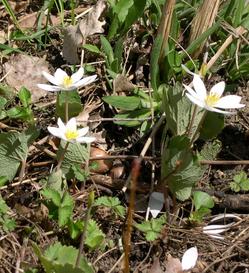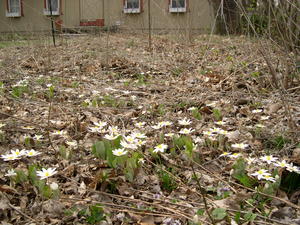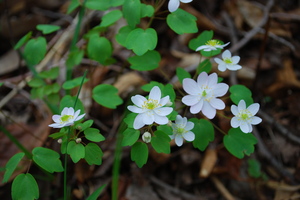A look ahead to spring with two of my favorite native plants

Bloodroot (Sanguinaria canadensis) flower, leaves and small seedpod (in foreground)
Rick Meader|Contributor
Another, later harbinger (if that is possible), is Bloodroot (Sanguinaria canadensis), which is the first native to pop out of the ground in my yard. Peeping out from between the brown oak leaves, their white flowers are the first I see (besides the non-native snowdrops and crocuses that can also be found in various spots in my yard) in the spring, and cause not a little giddiness that late winter is over.

Bloodroots bring spring to my front yard.
Rick Meader|Contributor
Bloodroot is a perennial which gets its common name from the orange juice its roots exude when you break them. The stem also exudes this orange sap when broken. This sap was used by native Americans as a dye, and they also used it as an herbal remedy, but since it has been shown to be toxic to animal cells, it is recommended to limit your exposure to the sap.
When it blooms in late March to early April, the flowers come up first, a single flower per stem. They open up to reveal eight to 12 white petals with yellow reproductive organs. The flowers don’t last long after pollination (by small bees and flies) though, especially if the days are warm, and drop their white petals as their leaves unfold. Their leaves are about 3 to 5” in diameter, with undulating edges, and these leaves persist into the summer, forming a unique base texture for a garden. In time, the plant forms seed pods that are about 1” long. The pods split open and drop out round seeds that are carried away by ants to their homes, where they can germinate and spread their range.

Rue anemone (Thalictrum thalictroides) in bloom
Rick Meader|Contributor
Together, these two perennials form a great twosome for spring blooming, and are fairly easily found as you take a walk around the woods in early spring. Enjoy nature, everyone!
Rick is a local landscape architect with a special interest in all things natural, including native plants and the critters that eat them. You can contact him at yourland1824@gmail.com.

